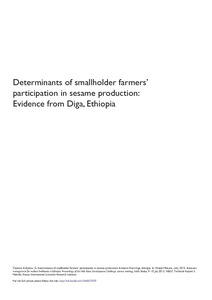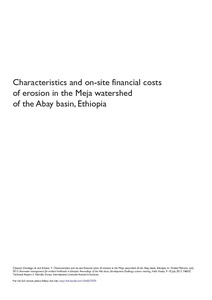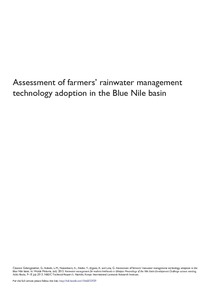Location
Vision, mission and strategy
ILRI's strategy 2013-2022 was approved in December 2012. It emerged from a wide processof consultation and engagement.
ILRI envisions... a world where all people have access to enough food and livelihood options to fulfil their potential.
ILRI’s mission is... to improve food and nutritional security and to reduce poverty in developing countries through research for efficient, safe and sustainable use of livestock—ensuring better lives through livestock.
ILRI’s three strategic objectives are:
- with partners, to develop, test, adapt and promote science-based practices that—being sustainable and scalable—achieve better lives through livestock.
- with partners,to provide compelling scientific evidence in ways that persuade decision-makers—from farms to boardrooms and parliaments—that smarter policies and bigger livestock investments can deliver significant socio-economic, health and environmental dividends to both poor nations and households.
- with partners,to increase capacity among ILRI’s key stakeholders to make better use of livestock science and investments for better lives through livestock.
This is ILRI’s second ten-year strategy. It incorporates a number of changes, many based on learning from the previous strategy (2000–2010, initially produced in 2000 and modified in 2002), an interim strategy (2011–2012) and an assessment of the external and internal environments in which the institute operates.
Members:
Resources
Displaying 396 - 400 of 1152Effect of drip lateral spacing and irrigation regime on yield, irrigation water use efficiency and net return of tomato and onion production in the Kobo Girrana valley of Ethiopia
The irrigation system in Kobo-Girrana valley is extensively developed into modern drip irrigation using ground water sources. Tomato and onion are among the major vegetables grown under drip irrigation. However, the drip lateral spacing is fixed to 1m for all irrigated crops. This lead to low crop water productivity, loss of land, less net return income and un-optimized irrigation production. An on-station experiment was conducted to determine the effect of drip line spacing and irrigation regime on yield, irrigation water use efficiency and net return income.
Determinants of smallholder farmers’ participation in sesame production: Evidence from Diga, Ethiopia
Considering that agriculture remains a key sector in Ethiopia, commercialization of the sector necessitates improving participation of smallholder farmers in markets, hence improving their incomes and livelihoods. Promoting smallholder commercialization through cash crop production is one avenue of such efforts. The main argument for smallholder commercialization through cash crop production is that it can allow households to increase their income directly. Sesame in Ethiopia can be taken as a good example in this regard.
Characteristics and on-site financial costs of erosion in the Meja watershed of the Abay basin, Ethiopia
Most soil erosion studies conducted in Ethiopia are focused on quantification of sediment and lack specific information on temporal and spatial variability of sediment and its associated plant nutrients loss. This study was, therefore quantified and characterized runoff and sediment along with estimated the on-site financial cost of erosion in terms of its concomitant crop yield loss due to the nitrogen and phosphorus lost in consequence of erosion.
Assessment of farmers’ rainwater management technology adoption in the Blue Nile basin
Agricultural productivity in Ethiopian highlands is constrained mainly by high climate variability. Although use of soil and water conservation technologies is recognized as a key strategy to improve agricultural productivity, adoption of technologies has been very low as farmers consider a variety of factors in their adoption decision. This study assesses the adoption pattern of interrelated rainwater management technologies and investigates factors that influence farm household adoption and scaling-up of rainwater management technologies and draws recommendations for policy.
Assessment of rainwater management practices and land use land cover changes in the Meja watershed of Ethiopia
Poor rainwater management (RWM) practices and resultant problems of land degradation and low water productivity are severe problems in the rural highlands of Ethiopia. The current study was undertaken at Meja watershed, which is located in the Jeldu district of Oromia region. The study investigated rainwater management practices and associated socio-economic and biophysical conditions in the watershed. The existing RWM interventions, their extent and the nature of changes in land use and land cover (LULC) conditions were mapped and evaluated.






